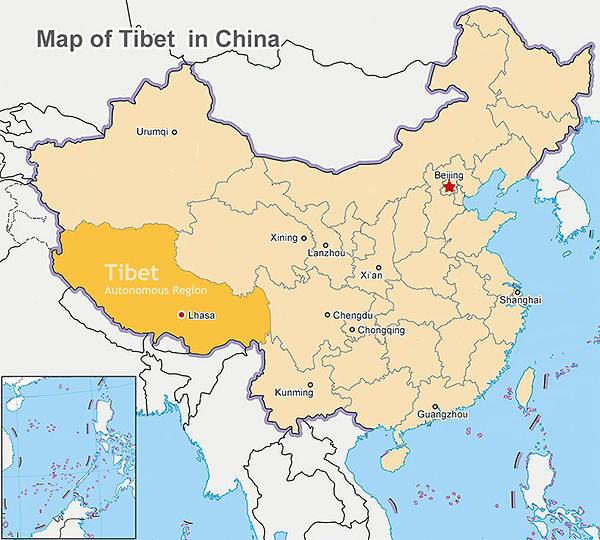Uyghur and Tibetan Voices Project
Tibetan History
The Tibetans are an East Asian ethnic group native to Tibet. Most Tibetans speak a Tibetic language and practice Tibetan Buddhism. Genetically, they are most similar to the Han Chinese and Bhutanese.
Tibet is on the western border of China and links China to south and central Asia. Historically, Tibet has been part of important trading routes. Tibet is often referred to as Asia's water tower and the Tibet plateau is an important water source for China. Tibet is also rich in minerals such as iron, copper, and zinc among others.
Today, Tibetans number 6.7 million and live in the Tibet Autonomous Region of China (TAR) as well as Chinese provinces, India, Nepal, Bhutan and other parts of the world. Approximately 6 million Tibetans live in TAR.
A brief summary of the history of Tibet is outlined below:
-
602: Tibet Unifies. Namri Songzen unifies Tibet into a state with its own culture and government.
-
821: Peace Treaty. Peace treaty with China signed that gives Tibet autonomy.
-
1271 - 1354: Mongolian Empire. Mongols conquer Tibet but Tibet has full autonomy.
-
1598: First Dalai Lama.
-
1630s-1717: Power Struggles. Manchu and Mongol fighting in Tibet.
-
1717-1720: Manchu (Qing) Dynasty. Tibet becomes tributary state and Qing rule begins.
-
1751: The 7th Dalai Lama. Recognized as ruler of Tibet, without political power.
-
1720-1911: Qing Rule.
-
1912-1950: Chinese Republic Declared. Tibet largely self-ruled while China preoccupied itself with civil wars and foreign invasions.
-
1914: Shimla Treaty. Recognized Tibet autonomy but China did not sign.
-
1950: Invasion of Tibet. 40,000 Chinese troops invaded Tibet.
-
1951: Seventeen Point Agreement. Tibet guaranteed autonomy but allows for Chinese civil and military presence in Tibet
-
1954: Dalai Lama meets with Mao.
-
1959: Uprisings. Dalai Lama and 80,000 Tibetans flee.
-
1965: TAR Formed. Chinese government establishes Tibetan Autonomous Region (TAR).
-
1966 - Late 1970s: Cultural Revolution. Monasteries and other culture destroyed.
-
1980s onward: Negotiations between Chinese and Tibetans.
-
Late 1980s onward: Heightened Conflict. Resistance, riots, hunger strikes, self-immolations. Talks between Dalai Lama and Chinese break down.
-
1990s: Repression and Re-education.
-
2008: Tibetan Unrest. Wave of protests and broader support for Tibet around Beijing Olympics.
-
2011: Shift In Tibetan Leadership. The 14th Dalai Lama gave his political power as head of state to democratic elected Prime Minister Dr. Lobsang Sangay.
As in the case of Xinjiang, the internal colonization of Tibet during the second half of the twentieth century, driven by Han ethnocentricism, paved the way for the Tibetan cultural genocide.

Map shows the location of Tibet in China. Source: TibetTour.org

A view of the residence of the Dalai Lama, in Lhasa, the capital of Tibet. March 5, 1953. Source: Sydney Morning Herald.